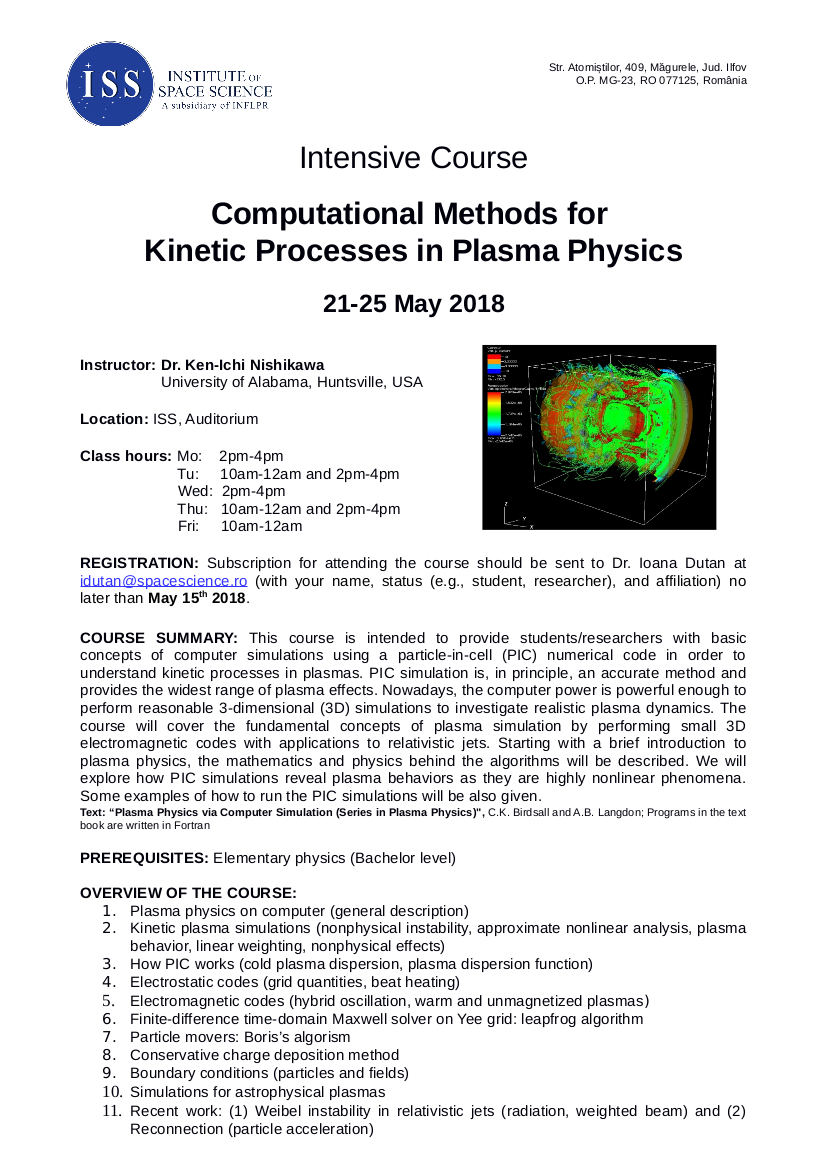Plasma Shocks and Instabilities in Relativistic Jets of Gamma-ray Bursts
- a project financed from the government budget through the STAR-C3 program of the ROmanian Space Agency (ROSA)
- period: 20 July 2017 - 19 July 2018
Research team:
- Dr. Ioana Duţan (P.I.), research scientist III
- Dr. Laurenţiu I. Caramete (Co.I.), research scientist III
- student
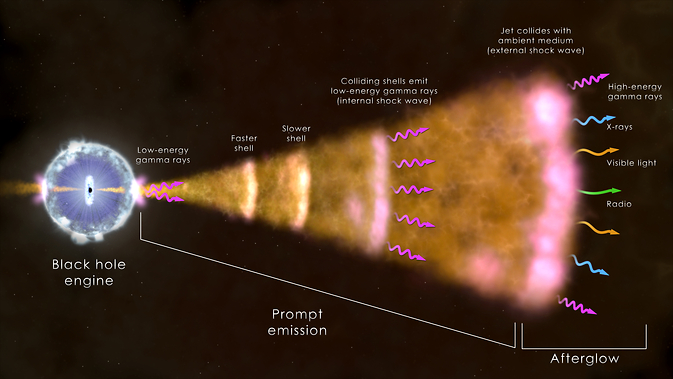 Gamma-ray bursts are short flashes of high energy photons that reach the Earth
from cosmological distances, the origin and mechanism of which are the focus of
intense research and debate. There is a general understanding that
gamma-ray bursts and their afterglows are produced in shocks resulting from collisions of
shells within relativistic jets from black holes as they propagate and interact with
the ambient medium. Particle-in-cell simulations enable us to study collisionless shock structure and instability growth in various plasma conditions that lead to particle acceleration, magnetic field generation, and emission of radiation.
Among relativistic plasma processes, much less is known about the velocity shear
processes such as the kinetic Kelvin-Helmholtz and mushroom instabilities. The
main goal of this research project is to unveil the nature of the processes at work
in relativistic jets of gamma-ray bursts. We will perform 3-dimensional relativistic
particle-in-cell simulations of both electron-proton and electron-positron
plasmas, for unmagnetized and magnetized jets, to reveal the role of kinetic
Kelvin-Helmholtz and mushroom instabilities in these extreme astrophysical
phenomena. We will self-consistently calculate the radiation spectra and spectral
evolution. These calculations will provide a link between jet plasma properties
and the observed radiation from gamma-ray burst jets. The proposed project will
also involve the training of an undergraduate student by combining education
and research aspects. Our project directly ties with the ESA's Cosmic Vision to
look for clues to the processes at work in gamma-ray bursts and provides
numerical simulation support for observational data from present and future
ESA’s missions, such as INTGRAL, XMM-Newton, and Athena.
Gamma-ray bursts are short flashes of high energy photons that reach the Earth
from cosmological distances, the origin and mechanism of which are the focus of
intense research and debate. There is a general understanding that
gamma-ray bursts and their afterglows are produced in shocks resulting from collisions of
shells within relativistic jets from black holes as they propagate and interact with
the ambient medium. Particle-in-cell simulations enable us to study collisionless shock structure and instability growth in various plasma conditions that lead to particle acceleration, magnetic field generation, and emission of radiation.
Among relativistic plasma processes, much less is known about the velocity shear
processes such as the kinetic Kelvin-Helmholtz and mushroom instabilities. The
main goal of this research project is to unveil the nature of the processes at work
in relativistic jets of gamma-ray bursts. We will perform 3-dimensional relativistic
particle-in-cell simulations of both electron-proton and electron-positron
plasmas, for unmagnetized and magnetized jets, to reveal the role of kinetic
Kelvin-Helmholtz and mushroom instabilities in these extreme astrophysical
phenomena. We will self-consistently calculate the radiation spectra and spectral
evolution. These calculations will provide a link between jet plasma properties
and the observed radiation from gamma-ray burst jets. The proposed project will
also involve the training of an undergraduate student by combining education
and research aspects. Our project directly ties with the ESA's Cosmic Vision to
look for clues to the processes at work in gamma-ray bursts and provides
numerical simulation support for observational data from present and future
ESA’s missions, such as INTGRAL, XMM-Newton, and Athena.
References:
Dutan, I., Nishikawa, K.-I., Mizuno, Y., et al. 2017, International Astronomical Union Proc., IAU Symposium, 324, 199
Nishikawa, K.-I., Frederiksen, J. T., Nordlung, A., et al. 2016, ApJ, 820, 94
Nishikawa, K.-I., Hardee, P. E., Dutan, I., et al. 2014, ApJ, 793, 60
Nishikawa, K.-I., Zhang, B., Dutan, I., et al. 2013, Ann. Geophys., 31, 1535
Nishikawa, K.-I., Niemiec, J., Hardee, P., et al. 2009, ApJ, 698, L10
Articles:
- Dutan, I., Nishikawa, K.-I., et al. 2019, Radiation Spectra from Particle-in-cell Simulations of Relativistic Jets containing Helical Magnetic Fields, in preparation
- Nishikawa, K.-I., Mizuno, Y., Gomez, J., Dutan, I., et al. 2019, Relativistic Jet Simulations of the Weibel Instability in the Slab Model to Cylindrical Jets with Helical Magnetic Fields, Galaxies, 7, 29
- Nishikawa, K.-I., Mizuno, Y., Gomez, J., Dutan, I., et al. 2017, Microscopic Processes in Global Relativistic Jets Containing Helical Magnetic Fields: Dependence on Jet Radius, Galaxies, 5, 58
Conferences, meetings, and talks:
- COSPAR 2018, Pasadena, California, USA, 14-22 July 2018 [talk]
- 29th Texas Symposium on Relativistic Astrophysics, Cape Town, South Africa, 2-8 December 2017 [talk]
- Special seminar at the University of Alabama in Huntsville, USA, 13 October 2017 [talk]
- Working visit to the University of Alabama in Huntsville (working with Dr. Ken-Ichi Nishikawa), USA, 10-23 October 2017
Special events at the ISS:
- Intensive Course: May 21-25, 2018
Location: Institute of Space Science, Auditorium
Instructor: Dr. Ken-Ichi Nishikawa (Department of Physics, University of Alabama in Huntsville, USA)
Title: Computational Methods for Kinetic Processes in Plasma Physics
List of Participants [pdf]
[video 1] [video 2] [video 3] [video 4] [video 5] [video 6] [video 7]
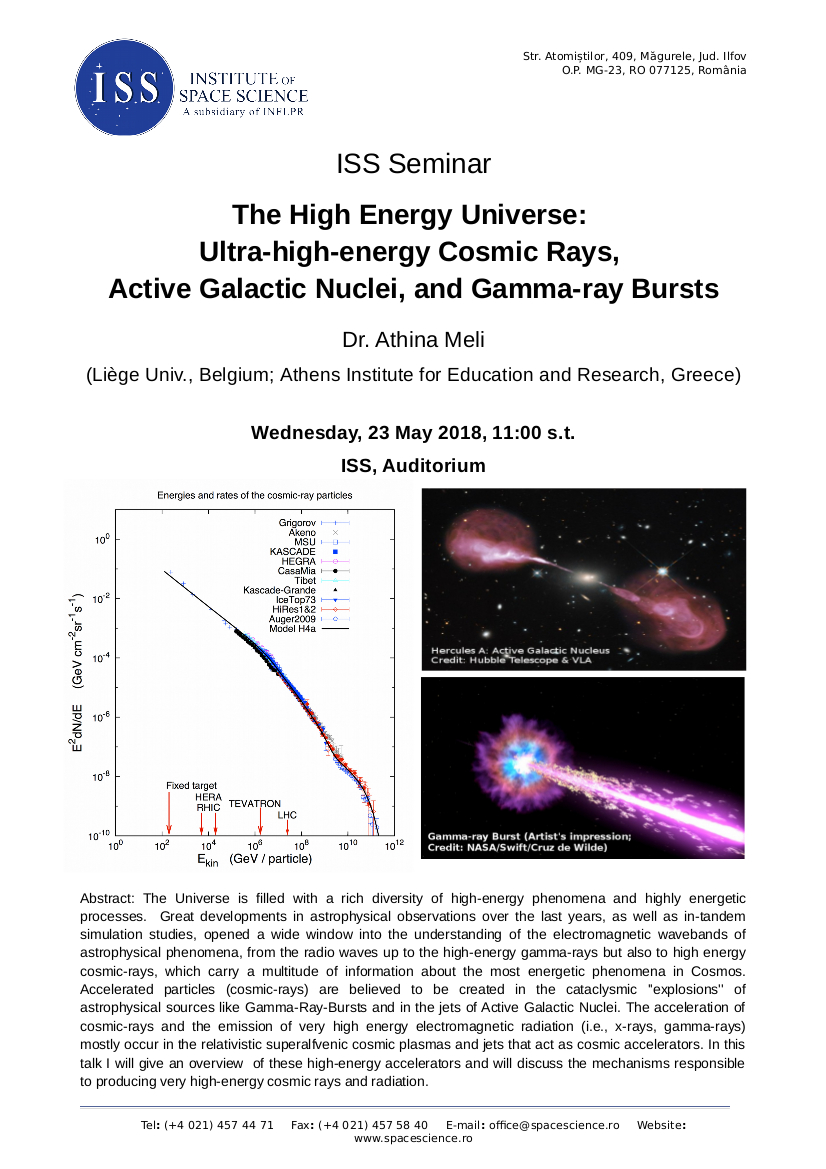
- ISS Seminar: Wednesday, May 23rd, 2018 -- 11:00 am
Location: Institute of Space Science, Auditorium
Speaker: Dr. Athina Meli
(University of Liege, Belgium and Athens Institute for Education and Research, Greece)
Title: The High Energy Universe: Ultra-high-energy Cosmic Rays, Active Galactic Nuclei, and Gamma-ray Bursts
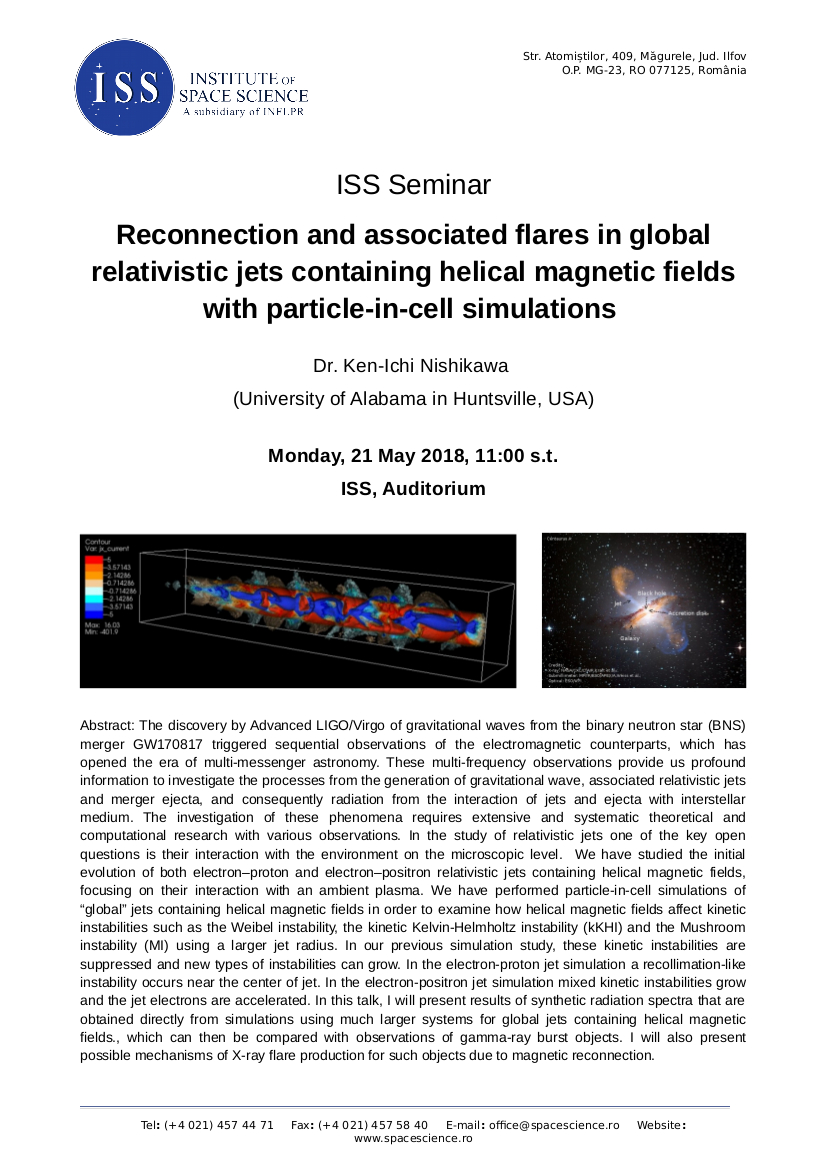
- ISS Seminar: Monday, May 21st, 2018 -- 11:00 am
Location: Institute of Space Science, Auditorium
Speaker: Dr. Ken-Ichi Nishikawa (Department of Physics, University of Alabama in Huntsville, USA)
Title: Reconnection and Associated Flares in Global Relativistic Jets containing Helical Magnetic Fields with Particle-in-cell Simulations
[video]
